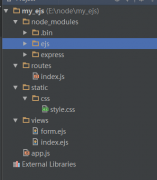实现图片预加载的三大方法及优缺点分析(3)
正如所看见,每加载一个图片都需要创建一个变量,如“img1 = new Image();”,及图片源地址声明,如“img3.src =
"../path/to/image-003.gif";”。参考该模式,你可根据需要加载任意多的图片。
我们又对该方法进行了改进。将该脚本封装入一个函数中,并使用 addLoadEvent(),延迟预加载时间,直到页面加载完毕。
function preloader() {
if (document.images) {
var img1 = new Image();
var img2 = new Image();
var img3 = new Image();
img1.src = "http://domain.tld/path/to/image-001.gif";
img2.src = "http://domain.tld/path/to/image-002.gif";
img3.src = "http://domain.tld/path/to/image-003.gif";
}
}
function addLoadEvent(func) {
var oldonload = window.onload;
if (typeof window.onload != 'function') {
window.onload = func;
} else {
window.onload = function() {
if (oldonload) {
oldonload();
}
func();
}
}
}
addLoadEvent(preloader);
方法三:使用Ajax实现预加载
上面所给出的方法似乎不够酷,那现在来看一个使用Ajax实现图片预加载的方法。该方法利用DOM,不仅仅预加载图片,还会预加载CSS、JavaScript等相关的东西。使用Ajax,比直接使用JavaScript,优越之处在于JavaScript和CSS的加载不会影响到当前页面。该方法简洁、高效。
window.onload = function() {
setTimeout(function() {
// XHR to request a JS and a CSS var xhr = new XMLHttpRequest();
xhr.open('GET', 'http://domain.tld/preload.js');
xhr.send('');
xhr = new XMLHttpRequest();
xhr.open('GET', 'http://domain.tld/preload.css');
xhr.send('');
// preload image new Image().src = "http://domain.tld/preload.png";
}, 1000);
};
上面代码预加载了“preload.js”、“preload.css”和“preload.png”。1000毫秒的超时是为了防止脚本挂起,而导致正常页面出现功能问题。
下面,我们看看如何用JavaScript来实现该加载过程:
window.onload = function() {
setTimeout(function() {
// reference to <head>
var head = document.getElementsByTagName('head')[0];
// a new CSS
var css = document.createElement('link');
css.type = "text/css";
css.rel = "stylesheet";
css.href = "http://domain.tld/preload.css";
// a new JS
var js = document.createElement("script");
js.type = "text/javascript";
js.src = "http://domain.tld/preload.js";
// preload JS and CSS head.appendChild(css);
head.appendChild(js);
// preload image
new Image().src = "http://domain.tld/preload.png";
}, 1000);
};






